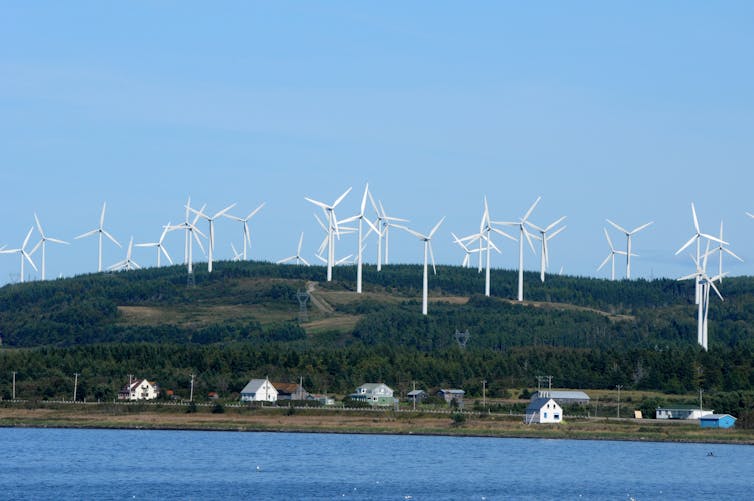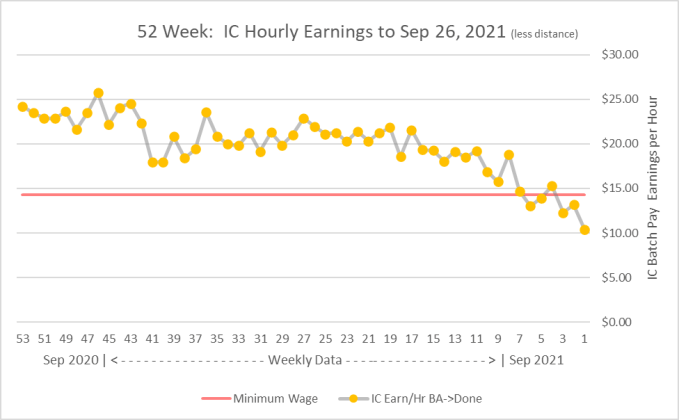NUKE NEWZ
Bruce output hits new peak
15 October 2021
Bruce Power yesterday announced the achievement of a new site generation peak and set a goal of achieving a site peak of 7000 MW by 2030 as it implements its Made in Ontario post-pandemic economic recovery plan. Production of medical isotopes is also part of the plan, and the company said it plans to carry out a harvest of the medical isotope cobalt-60 before the end of the year.
.jpg?ext=.jpg) The Bruce site (Image: Bruce Power)
The Bruce site (Image: Bruce Power)"We are moving forward with our five-point economic recovery plan and today's milestones demonstrate we're advancing this at a time when our province and our planet need it most," the company's President and CEO Mike Rencheck said. "By achieving a new site peak output and building towards a goal of 7000 MW by 2030, we're supporting Ontario's recovery while also meeting climate change targets and providing the medical isotopes the world needs."
The site generation peak of 6550 MW - up from 6300 MW in 2016 - has been achieved through investments and innovations in the facility, the company said. The previous peak output was achieved at a time when all eight Candu units at the site, on the shores of Lake Huron, were operating. One unit - Bruce 6 - was taken offline in January to undergo major refurbishment under the ongoing Major Component Replacement Project, which will extend the operational life of the power plant until 2064.
The company said it is aiming for a site peak of 7000 MW by 2030 in support of climate change targets and future clean energy needs. To this end, it has launched Project 2030 which will focus on continued asset optimisation, innovations, and leveraging new technology, which could include integration with storage and other forms of energy to increase the site peak. A feasibility review of opportunities to reach this goal is being carried out, and individual initiatives will be announced as they are approved, the company said.
Cobalt harvest
Production of radioisotopes including Co-60, which is widely used for the sterilisation of medical equipment and also in some medical applications, is also a feature of the economic recovery plan. Four of Bruce's eight Candu units produce the isotope, made by irradiating special rods containing cobalt-59 inside a reactor.
The company yesterday said a Co-60 harvest will be completed at Bruce later this year and will be processed and distributed by Ottawa-based Nordion. This harvest will produce sufficient isotopes to sterilise 10 billion pairs of surgical gloves and COVID swabs, as well as producing isotopes for use in the treatment of breast cancer and brain tumours, it added.
Nuclear helps tackle high energy prices, Foratom says
15 October 2021
A European Commission (EC) communication that includes a "toolbox" that the EU and its Member States can use to address the immediate impact of high energy prices fails to mention nuclear energy's contribution, Foratom said. By including nuclear, the EU would have a unique opportunity of limiting its dependence on carbon intensive natural gas imports, thereby reducing its exposure to wholesale price fluctuations and its carbon footprint, the European nuclear trade body added.
.jpg?ext=.jpg) (Image: Pixabay)
(Image: Pixabay)
On 13 October, the EC adopted a Communication aimed at tackling the exceptional rise in global energy prices, which is projected to last through the winter. The communication includes a toolbox that can be used to address the current price increases and further strengthen resilience against future shocks.
"The current price spike requires a rapid and coordinated response. The existing legal framework enables the EU and its Member States to take action to address the immediate impacts on consumers and businesses," the EC noted. "Priority should be given to targeted measures that can rapidly mitigate the impact of price rises for vulnerable consumers and small businesses. These measures should be easily adjustable in the Spring, when the situation is expected to stabilise. Our long-term transition and investments in cleaner energy sources should not be disrupted."
Short-term national measures include emergency income support to households, state aid for companies and targeted tax reductions. The Commission said it will also support investments in renewable energy and energy efficiency; examine possible measures on energy storage and purchasing of gas reserves; and assess the current electricity market design.
It added, "The clean energy transition is the best insurance against price shocks in the future, and needs to be accelerated."
"The Commission is helping Member States to take immediate measures to reduce the impact on households and businesses this winter," said Energy Commissioner Kadri Simson. "At the same time, we identify other medium-term measures to ensure that our energy system is more resilient and more flexible to withstand any future volatility throughout the transition."
Simson presented the communication and toolbox to Members of the European Parliament yesterday and will present it to energy ministers on 26 October. European leaders are then due to discuss energy prices at the upcoming European Council on 21-22 October.
Nuclear's contribution
Foratom said the EC communication failed to "pay closer attention to the role which low-carbon and dispatchable nuclear can play in mitigating the current energy crisis."
The organisation's Director General Yves Desbazeille said: "As highlighted in the communication, the current price increases are being driven by higher natural gas prices on the global market. Therefore, as the EU moves to increase its share of variable renewables, it is essential that EU policy supports other low-carbon European sources to ensure reduced dependency on imports."
Foratom also noted the communication highlights the effects which lower availability of renewables has had on the market, leading to supply constraints. "Because nuclear can provide both baseload and dispatchable electricity, it acts as a perfect counterbalance at times when renewables are unavailable," it said. "As noted in the communication, nuclear currently accounts for around 25% of the electricity mix in the EU."
"It would be a mistake to treat this as a short-term issue. It is clear that demand for electricity is expected to increase dramatically in the push to decarbonise Europe's economy," Desbazeille added. "Therefore, the EU needs to already be putting solutions in place today to ensure that it is able to generate enough low-carbon electricity in Europe to meet growing demand. This means supporting the development of nuclear energy."
Germans asked to keep reactors in operation
15 October 2021
Germany's phase-out of nuclear energy will only lead to the country missing its 2030 carbon emissions target, 25 leading foreign and German environmentalists, journalists and academics have written in an open letter to the German public. They call on German politicians to be "brave enough" to change legislation to at least postpone the shutdown of the country's reactors.
.jpg?ext=.jpg) The Grohnde plant, which is due to shut down at the end of 2021 (Image: PreussenElektra)
The Grohnde plant, which is due to shut down at the end of 2021 (Image: PreussenElektra)The letter - titled Dear Germany, please leave the nuclear power plants on the grid and published on 13 October in Welt - notes a recent draft government report that predicts that, based on the policies in place in August 2020, Germany will largely miss its target of a 65% reduction in CO2 emissions by 2030 compared with 1990 levels. "It is very difficult to imagine that the measures adopted since then will completely close this gap," it says.
The authors add: "However, Germany is not exhausting all the options available to the country. The elephant in the room is that Germany is increasing the carbon emissions of its energy system by stepping out of nuclear power. And this at a time when the decarbonisation of the electricity industry is the main strategy for effectively achieving an energy system with net-zero emissions."
Following the accident at the Fukushima Daiichi plant in Japan in March 2011, the government of Chancellor Angela Merkel decided it would phase out its use of nuclear power by the end of 2022 at the latest. Prior to the accident, Germany was obtaining around one-quarter of its electricity from nuclear power.
In August 2011, the 13th amendment of the Nuclear Power Act came into effect, which underlined the political will to phase out nuclear power in Germany. As a result, eight units were closed down immediately: Biblis A and B, Brunsbüttel, Isar 1, Krümmel, Neckarwestheim 1, Phillipsburg 1 and Unterweser.
By the end of this year, Brokdorf, Grohnde and Gundremmingen C are scheduled to shut down, with the country's final three units - Emsland, Isar 2 and Neckarwestheim 2 - set to close at the end of 2022.
"This loss of low-carbon electricity generation with an installed capacity of 8 GW, which currently accounts for 12% of Germany's annual electricity production, will inevitably lead to around 60 million tonnes of additional carbon emissions per year because more fossil fuels have to be burned in order to provide the necessary replacement service," the letter states. "This will increase national emissions by 5% compared to the reference year 1990."
The authors say Germany cannot afford such an "unnecessary setback" at a time when its emissions are already rising sharply again after the COVID-19 pandemic. They note in 2021 emissions are expected to be "only" 37% below the level of 1990. This is still outside the 2020 target of 40% below 1990 levels, which has already been missed. The expansion of renewable energies and the construction of north-south transmission lines are also currently being delayed, they say, while the recent steep rise in natural gas prices is favouring the burning of coal.
"You could still achieve your climate target for 2030. You could still change course and change your priorities so that the coal phase-out comes before the nuclear phase-out. All that is needed is a climate emergency ordinance with an amendment to the Nuclear Power Act, which puts the extension of the life cycle for the power plants from 2030 to 2036 back into force.
"Are your politicians brave enough to make this specific change, which would clearly have a positive impact on emissions, on your behalf at a critical time in the climate crisis? This contingency measure - a simple postponement of the nuclear phase-out - would rightly deserve the respect of the younger generation and future generations."
Among the signatories of the letter are: physicist Wade Allison from the University of Oxford; energy analyst Malcolm Grimston of Imperial College London; climate researcher James Hansen of Columbia University; Rainer Klute, chairman of German pro-nuclear group Nuklearia; British environmentalists and writers Mark Lynas and George Monbiot; Rauli Partanen, founder of Finland's Think Atom; US documentary filmmaker Robert Stone; Geraldine Thomas, molecular biologist and director of the Chernobyl Tissue Bank, Imperial College London; and Myrto Tripathi, founder of France's Voix du Nucléaire.
British nuclear transport ship fully recycled
12 October 2021
The Oceanic Pintail purpose-built nuclear transport ship, which was decommissioned in November 2020 after 33 years of service, has now been fully recycled, Nuclear Transport Solutions (NTS) announced today. Its contractor - Dales Marine Services - had been set the target that 98% of the vessel be recycled.
.jpg?ext=.jpg) Dismantling of the Oceanic Pintail's hull nearing completion (Image: NTS)
Dismantling of the Oceanic Pintail's hull nearing completion (Image: NTS)The Japanese-built 3865-tonne vessel was certified to the International Maritime Organisation's highest level, INF3, allowing it to carry used nuclear fuel, high-level waste and plutonium with no limit on the maximum aggregate radioactivity of the materials carried. Launched in 1987, the Oceanic Pintail has served customers from across the world with bespoke solutions to all specialist nuclear transport challenges and was the first vessel to ship mixed-oxide fuel from Europe to Japan in 1999.
Dales Marine was informed in October 2020 that it had won the bidding process to dismantle the ship. The following month, Oceanic Pintail made its final journey from Barrow-in-Furness, in Cumbria, England, to Dales Marine's dry dock facilities in Leith, Scotland.
"Applying a number of innovative techniques, the Scottish firm exceeded expectations, and recycled every part of the NDA-owned Oceanic Pintail," said NTS, part of the Nuclear Decommissioning Authority (NDA).
Dales Marine achieved this by: separating different oils from water, and using the oil as furnace fuel; converting insulation into electrical energy; and crushing concrete and tiles to create material used in the construction industry.
Reusing 100% of a nuclear vessel is a UK first, and supports both the NDA group and government's carbon net-zero ambitions, NTS noted.
"NTS takes its environmental responsibilities seriously, so we're delighted that 100% of Oceanic Pintail has been recycled," said NTS Shipping Director Peter Buchan. "We set our contractors, Dales Marine, an incredibly ambitious recycling target. They took that challenge and set the standard for others to follow when it comes to decommissioning vessels."
He added: "It's a fantastic achievement, especially considering the work was completed in the middle of the COVID-19 pandemic, so a lot of thanks must go to everyone who has played a role in ensuring this project has been a huge success. Oceanic Pintail served the UK with distinction and this is a fitting end to its life."
NDA CEO David Peattie said: "The NDA group is committed to supporting government goals to be carbon net-zero by 2050. This fantastic achievement in recycling 100% of Oceanic Pintail supports our ambitions to reduce our carbon impact."
NTS operates a fleet of over 100 rail locomotives, three specialist nuclear vessels - the Pacific Grebe, Pacific Egret and Pacific Heron - and a 700-strong workforce.
Researched and written by World Nuclear News





















